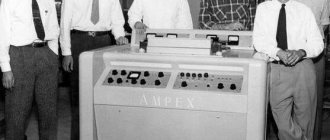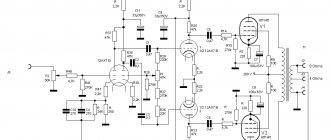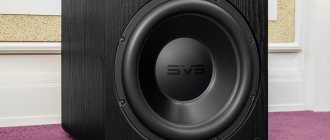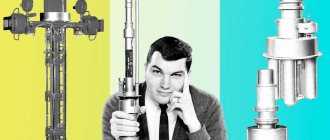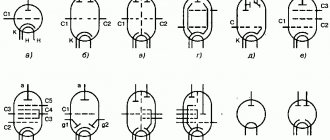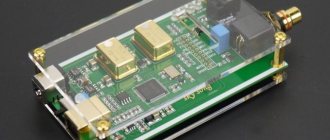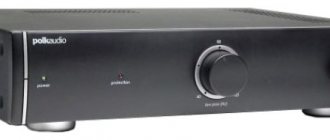The photo shows steampunk goggles from the master Xyrgo
Once I thought that lamps were simple and made the same way: if the technology is the same, then why make lamps worse than possible? But as it turned out, even though a lot of time has passed, the lamps produced are different, and in some places “not good enough.” Several times I came across the same thing - with all the possible choices, you will definitely get the wrong lamp and everything will go awry. To protect yourself from some typical troubles, you can simply read my new article on Datagor.
Any musician who is serious about music has to deal with the issue of choosing lamps. After all, a lamp apparatus requires scheduled maintenance and timely replacement of lamps. There are many hidden pitfalls in this seemingly simple action. The wrong choice will either not give the desired effect or will kill expensive lamps. The instructions for the equipment often do not indicate which lamps should be installed and what requirements they should meet.
Next, I will try to explain what needs to be done, which lamp to choose and how to choose an analogue.
↑ 12AX7
There is probably no other lamp that, with just one name, would be so diverse. These lamps are produced by a large number of factories to this day, and they are produced in different ways, with their own habits and parameters. These tubes are used in almost all guitar and bass guitar amplifiers, and they are the ones with the most problems when choosing.
The biggest problem in their selection is the inability of most of these tubes to operate in the so-called “cathode follower” or “cathode follower” - a special place in the amplifier where the load is applied not to the anode (as in all other places), but to the cathode. The problem here is that a large potential difference appears between the cathode and the filament, which can kill (and very often kills) the lamp. This can happen very quickly (within a minute of operation) or quite slowly (1-2 weeks). One way or another, the lamps do not reach their expected lifespan.
Cathode followers are found in multi-tube amplifiers, most often on the last tube of the preamp, before the bass reflex. If there is a tube effects loop (like, for example, Masa/Boogie or Soldano SLO), then you can be almost sure that there are 2 tubes in the cathode follower. They are also found in tube preamps.
Fragment excluded. The full version is available to patrons and full members of the community.
The Soviet tube has the most gain. Plus, it's cheaper. Any reason to think about it?
Characteristics of tube stereo amplifier Cayin LA-34 (EL34)
| output power | 2 x 32 W |
| Frequency response | 10 Hz – 42 kHz (- 3 dB) |
| Harmonic distortion | 1% (1 kHz) |
| Signal to noise ratio | 89 dB |
| Input sensitivity | 260 mV |
| Input impedance | 100 kOhm |
| Types of lamps used | pre-section: 1 x 12AX7, 2 x 12AU7, output stage: 4 x EL34 |
| Inputs | 3 line RCA |
| Speaker output | 6 screw terminals (with selectable terminals for 4-ohm and 8-ohm loads) |
| Power consumption | 260 W |
| Dimensions (WxHxD) | 330x180x272 mm |
| Weight | 13.5 kg |
↑ Output tubes
The muscles of the amplifier are fraught with as many features as the pre-stage tubes. Careless selection of tubes can lead to failure of the tubes or even the amplifier itself! Therefore, you need to follow simple universal rules:
- Do not use worn lamps. You can use a little used one, but without obvious signs of long-term use (black or gray coating on the cylinder, cloudiness of the glass of the cylinder, etc.)
- If the amplifier uses more than one lamp (2, 4 or 6), then purchase lamps that are matched to each other in terms of parameters and in the appropriate quantity! If you take the lamps differently, problems may arise from strong noise and background to damage to the amplifier!
- Handle new lamps with care. Most preamp tubes are small and their housings are rigid enough to survive even falls. But with output lamps the opposite is true - they are large and fragile.
Let's look at the most common lamps, namely EL84
and their analogue
6P14P
,
6V6
and analogue
6P6S
,
6L6
and analogue
6P3S
, also known as
5881
and
KT66
, and, finally,
EL34
and its variant
6550
.
In a cage
First of all, you will be greeted by a cage almost the entire width of the amplifier, which protects just a huge number of lamps from the outside world. Or the world from lamps.
The Cayin CS-100A has a whole microdistrict of lamps! And large, and small, and medium... Honestly, you can get confused. So keep the list: one 6SN7; two 12AU7EH; two more 12BH7EH and, finally, in the output stage - eight EL34 pentodes!
In accordance with the best tube traditions, the same amplifier can be purchased in combination with other tubes. Or you can buy lamps separately and replace them - instead of EL34, KT88 is installed. If you decide to do this experiment, do not forget to click the toggle switch on the rear panel to the appropriate position.
Behind the lamp bank, three transformer casings stand guard over the cage. The central one is a supply torus, and on its sides it is supported by two output W-shaped ones. Their casings, like the entire top panel under the lamps, are decorated in a color rare for high-end, which is very close to blue and generously filled with a “metallic” effect: such depth was achieved by painting as many as six layers. And the inscriptions on the top panels of the transformers warn that the quality here is high, and nothing else.
Cayin offers two color options for the CS-100A: silver and black. But in fact, only the color of the front panel changes. In my subjective opinion, the device looks more harmonious with a black panel.
↑ EL84
These fairly common lamps are often undeservedly ignored by musicians as “undersized.”
Very often, various low-quality properties are attributed to them, such as loose sound, insufficient massiveness and detail. We must think that this is due to their small size - a standard finger-type housing is not as impressive as a huge octal lamp cylinder. However, despite all the criticism, this is a tube with a very distinctive sound, sounding great on a wedge or crunch. Yes, it transmits powerful distortions with difficulty, just as, when overloaded, it itself produces a very strange sound. But you shouldn’t write it off as scrap, because you can hardly find something better in its class, as the old Laney amplifiers prove. When choosing these lamps, you need to consider the following: there are 2 main types of these lamps, regardless of the manufacturer: a simple EL84 and a lamp with grade M (military) - EL84M. The latter tube is distinguished by the fact that it can operate at much higher voltages, allowing you to get up to 50 watts from four of these tubes (versus 30 for the EL84) and has a harsher, more aggressive sound. This approach is used, for example, in the mentioned Laney amplifiers. Of course, you can’t replace the EL84M with a simple EL84 - the tube simply won’t withstand the load, which can lead to damage to the amplifier. But on the contrary - it’s possible!
The EL84 lamp (without grade M!) has a Soviet analogue, 6P14P
:
In general, it is believed that it is a 6P14P lamp, but after carefully studying the characteristics, you will notice that some have significant differences. A closer analogue is the same lamp, but with the EB grade: 6P14P-EV
.
The tubes are so similar that after replacing one with the other, only an offset adjustment is required; they sound very similar. Before purchasing these lamps, it is worth checking what voltage is applied to the amplifier. It also happens that in very old amplifiers, both regular EL84 and new ones, for example JJ EL84
simply cannot withstand high voltages, about which there are many topics on the forums.
If there is no way to find out the voltage, then it is better to fork out for the more expensive military EL84M
.
End section
So, let's start with the basic concepts. A guitar amplifier consists of 3 main parts: a preamp (preamplifier section), a power amplifier (also known as the power amplifier) and a power section (the transformer and everything after the power amplifier). The rectifier tube in the power section has a significant effect on the sound. It is also very important which tube is placed first in the preamplifier (in place of v1). But today we are not talking about them, but about the lamps responsible for power and volume - about the lamps in the terminal. They not only amplify the signal coming to them from the preamplifier, but also add their own characteristic overdrive and frequency coloring to the sound. In my opinion, the end tubes play the most important role in how an amp ends up sounding. It is because of the differences in the terminal tubes that such characteristic terms as American and British sound, as well as various other subspecies and varieties, appeared.
Imagine this: most hi-gain amplifiers have a gain knob that controls the overdrive on the channel. Next comes the master volume knob so that we can adjust the level that is convenient for us. Thus, it turns out that we can play with overdrive and at low volume. The overdrive you hear in this case is the preamp tubes being overdriven. As a rule, the sound itself is quite fuzzy, curly (depending on the amplifier) or grainy, the return from this sound is very small, it is not dynamic. You will also notice that if you raise the volume knob, the amplifier seems to come to life, and the sound becomes saturated, filled with frequencies, becoming more dynamic and interesting. It's the end lamps that work.
Take for example the Deluxe Reverb, 22W - a classic American clean sound. But by raising the volume to 5-6, the amplifier will begin to overload and this sound will be completely different from what your overdrive pedal sounds like. You will notice that it has more overtones, the sound is fuller, richer, and more dynamic. The amp is more responsive to your playing and the volume knob on your guitar. These are the main characteristics of terminal lamp overload. When the tube in the amplifier begins to overload (so-called breakup occurs), it seems that a little compression is added to the sound along with the overdrive. It is important, however, not to forget that in our example, the tubes in the preamplifier are also partially responsible for the overload. It is the combination of overloading the preamp and end tubes that gives that delicious and magical result!
The power tube is one of the last links in the guitar tone chain. It is located in the amplifier directly in front of the output transformer. The different types of tubes in the power supply determine the sound character of your amplifier. Know that the overall sound is made up of parts. And each of these parts is very important. Preamp, equalizer, end, transformer, speakers - all these things ultimately give the sound for which we are willing to pay such crazy money. Power lamps alone do not solve anything. But today we will talk about them.
↑ 6V6
Despite its size and power comparable to the EL84, this lamp is surprisingly rated as “adult”.
Surprisingly because this tube started its career in a Fender Tweed Champ beginner amp. Although, one can understand such an attitude, because this lamp behaves like its larger brothers, easily transmitting everything that is fed to it, be it pure sound or heavy overload. The lamp itself also overloads well, giving an adult overload. I think not many people have seen the original 6V6, made in a metal cylinder. The version used in amplifiers has a straight glass bottle and GT grade - 6V6GT. They are used in amplifiers either one or two at a time.
Soviet industry produced a complete analogue of these 6V6GT lamps under the 6P6S marking.
Under normal conditions, Soviet lamps are absolutely equivalent, have a similar sound and similar characteristics.
When selecting these tubes for an amplifier, it is worth considering one feature - the tubes of early years of production were made with a large margin of operating voltage, which was mercilessly exploited in Fender amplifiers. Modern versions of 6V6GT, like 6P6S, are not able to withstand such stress, so they die very quickly. Before choosing, you should check with the manufacturer or specialist how high the voltage in the amplifier is. If it is higher than the capabilities of the lamp, then you should opt for the more expensive, but also more stable 6V6EH
Domestic analogues of imported radio tubes
A table from the site guitar.ru, which shows all possible family connections between imported and domestic lamps, as well as between them. We recommend that you read this table carefully; only lamps with the designations “=” and “+” can be used to replace an imported lamp without modifying the device circuit!
Author: Gor Voznesensky Date of publication: September 11, 1999
DESIGNATIONS = full analogue + close analogue, direct replacement possible ~ analogue in all respects except heat # close analogue; differences in some modes and pinouts. […] very approximate analogue * lamp of increased reliability KENOTRONS |
| lamp | Un | In | analogue |
| 5Z4 | 5 | 2 | =5Ц4С |
| 5Y3 | 5 | 2 | #5TS4M |
| 5W4 | 5 | 1.5 | #5TS4M |
| Analogues: 5Z4 = GZ30 = 5CG4 5Y3 = U50 = 6087 = 6106* | |||
| lamp | Un | In | analogue |
| 5U4G | 5 | 3 | =5Ts3S |
| GZ32 | 5 | 2 | #5TS3S |
| GZ34 | 5 | 1,9 | #5TS3S |
| Analogues: 5U4G = U52 = 5Z3 = 5AS4 = 5Z10 = 5931* GZ32 = 5AQ4 = 5V4G GZ34 = 5AR4 | |||
| lamp | Un | In | analogue |
| EZ82 | 6.3 | 0.6 | #6TS4P |
| EZ90 | 6.3 | 0.6 | #6TS4P |
| HZ90 | 12.6 | 0.3 | #6TS4P |
| 6X5GT | 6.3 | 0.6 | =6Ц5С |
| 12X5GT | 12.6 | 0.3 | ~6Ts5S |
| Analogues: EZ90 = EZ900 = U78 = 6Z31 = 6063 =6X4W* = 6202* HZ90 = 12X4 6X5GT = EZ35 = U70 | |||
| TRIODES |
| lamp | analogue |
| 7586 | =6С51Н |
| 7895 | =6С52Н |
| EC1010 | =6С53Н |
| 6B4G | =6C4C |
| 6BK4 | =6C20C |
| 811A | =G-811 |
| lamp | analogue |
| 6J5(GT) | =6C2C |
| 6C5(GT) | =6C5C |
| 6F5(GT) | =6Ф5С |
| 9002 | =6C1P |
| Analogues: 6F5 = H63 6J5GT = L63 | |
| lamp | Un | In | analogue |
| EC98 | 6.3 | 0.4 | =6C2P |
| EC86 | 6.3 | 0.2 | #6С3П #6С4П |
| EC806* | 6.3 | 0.165 | #6С3П #6С4П |
| PC86 | 3.8 | 0.3 | #6С3П #6С4П |
| Analogues: EC98 = 6J4(WA*) = 6C31 EC806S = E86C* PC86 = E7075 = 4CM4 | |||
| DUAL TRIODES |
| lamp | analogue |
| 2C51 | =6Н3П |
| Analogues: 2C51 = 6CC42 = 5670 = 6385 = 6854 | |
| lamp | Un | In | analogue |
| 12AY7 | 6.3 12.6 | 0.3 0.15 | ~6Н4П |
| Analogues: 12AY7 = 6072(A) | |||
| lamp | Un | In | analogue |
| 6SC7 | 6.3 | 0.3 | =6Н10С |
| 12SC7 | 12.6 | 0.15 | =12Н10С |
| 6SL7 | 6.3 | 0.3 | =6Н9С |
| 12SL7 | 12.6 | 0.15 | ~6Н9С |
| Analogues: 6SL7 ~ ECC35 (Iн=0.4а) =6SU7GT(W*) = 6113 = 6188* | |||
| lamp | Un | In | analogue |
| 12AH7 | 12.6 | 0.15 | =12Н11С |
| 6AH7 | 6.3 | 0.3 | ~12Н11С |
| lamp | analogue |
| 6AS7G | =6Н13С +6Н5С |
| Analogues: 6AS7G = ECC230 = 6080 = 6520 | |
| lamp | analogue |
| ECC86 | =6Н27П |
| Analogues: ECC86 = 6GM8 | |
| lamp | Un | In | analogue |
| E88CC* | 6.3 | 0.3 | =6Н23П |
| ECC88 | 6.3 | 0.365 | ~6N23P |
| PCC88 | 7.0 | 0.3 | ~6N23P |
| UCC88 | 21.0 | 0.1 | ~6N23P |
| E188CC* | 6.3 | 0.335 | ~6N23P |
| Analogues: E88CC = E7106* = ECC868* = 6922* ECC88 = E7144 = 6DJ8 PCC88 = E7022 = 7DJ8 UCC88 = 21DJ8 E188CC = 6922(WA*) = 7308* | |||
| lamp | Un | In | analogue |
| ECC89 | 6.3 | 0.365 | ~6N24P |
| PCC89 | 7.2 | 0.3 | ~6N24P |
| XCC89 | 4.5 | 0.6 | ~6N24P |
| YCC89 | 5.2 | 0.45 | ~6N24P |
| ECC189 | 6.3 | 0.365 | #6Н24П |
| PCC189 | 7.2 | 0.3 | #6Н24П |
| UCC189 | 21 | 0.1 | #6Н24П |
| XCC189 | 4.5 | 0.6 | #6Н24П |
| YCC189 | 5.2 | 0.45 | #6Н24П |
| Analogues: ECC89 = 6FC7 ECC189 = 6ES8 | |||
| lamp | Un | In | analogue |
| 6CC41 | 6.3 | 0.3 | =6Н2П |
| 6AX7 | 3.15 6.3 | 0.6 0.3 | #6Н2П |
| 12AX7 | 6.3 12.6 | 0.3 0.15 | #6Н2П |
| 12AD7 | 6.3 12.6 | 0.3 0.15 | #6Н2П |
| 12BZ7 | 6.3 12.6 | 0.3 0.15 | #6Н2П |
| Analogues: 6CC41 = E7018 12AX7 = B339 = ECC803* = E83CC* = ECC83 = E7017 = 12DF7 = 12DT7 = 5721* = 6057 = 6681 = 7025 = 7729 | |||
| lamp | Un | In | analogue |
| 1G6 | 1.4 | 0.1 | ~1Н3С |
| 6N7 | 6.3 | 0.8 | =6Н7С |
| 6SN7 | 6.3 | 0.6 | =6Н8С |
| 8SN7 | 8.4 | 0.45 | ~6Н8С |
| 12SN7 | 12.6 | 0.3 | ~6Н8С |
| 25SN7 | 25 | 0.15 | ~6Н8С |
| 6CG7 | 6.3 | 0.6 | #6Н8С |
| 8CG7 | 8.4 | 0.45 | [6Н1П] |
| Analogues: 6SN7 = B65 = ECC32 = 6CC10 = 5692* = 6180 12SN7 = B36 | |||
| lamp | Un | In | analogue |
| 6J6 | 6.3 | 0.45 | =6Н15П |
| 5J6 | 4.7 | 0.6 | ~6N15P |
| 9J6 | 9.5 | 0.3 | ~6N15P |
| 19J6 | 18.9 | 0.15 | ~6N15P |
| Analogues: 6J6 = ECC91 = 6CC31 =6030* = 6099* = 6101* = 6535 = 6927* | |||
| lamp | Un | In | analogue |
| ECC84 | 6.3 | 0.34 | =6Н14П |
| PCC84 | 7 | 0.3 | ~6N14P |
| UCC84 | 21 | 0.1 | ~6N14P |
| Analogues: ECC84 = E7019 = 6CW7 | |||
| OUTPUT PENTODES |
| lamp | analogue |
| 807 | =G-807 |
| 6AG7 | =6P9 |
| 6GB5A | =6P20S |
| lamp | Un | In | analogue |
| 6F6 | 6.3 | 0.7 | =6Ф6С |
| 6V6 | 6.3 | 0.45 | =6P6S |
| 5V6 | 4.7 | 0.6 | ~6P6S |
| 12V6 | 12.6 | 0.225 | ~6P6S |
| 5992* | 6.3 | 0.6 | ~6P6S |
| Analogues: 6F6 = N63 6V6 = 6AY5 = 5871 = 7184 = 7408* | |||
| lamp | Un | In | analogue |
| 6L6 | 6.3 | 0.9 | =6P3S |
| 6L50 | 6.3 | 1.0 | #6P7S [6P3S] |
| 6BG6 | 6.3 | 0.9 | =6P7S |
| 19BG6 | 18.9 | 0.3 | ~6P7S |
| 25BG6 | 25 | 0.3 | ~6P7S |
| Analogues: 6L6 = EL39 = 6CN5 = 1622 = 5881 = 5932* = 7581 | |||
| lamp | Un | In | analogue |
| EL34 | 6.3 | 1.5 | =6P27S |
| EL37 | 6.3 | 1.4 | #6P27S |
| Analogues: EL34 = E7032 = 6CA7 = E34L # KT-77 EL37 = N66 | |||
| lamp | Un | In | analogue |
| EL36 | 6.3 | 1.25 | =6P31S |
| PL36 | 25 | 0.3 | ~6P31S |
| XL36 | 13 | 0.6 | ~6P31S |
| Analogues: EL36 = 6CM5 PL36 = E7040 = 25E5 XL36 = 13CM5 | |||
| lamp | Un | In | analogue |
| EL500 | 6.3 | 1.38 | =6P36S |
| PL500 | 27 | 0.3 | ~6P36S |
| XL500 | 14 | 0.6 | ~6P36S |
| Analogues: EL500 = 6GB5 PL500 = 28GB5 XL500 = 14GB5 | |||
| lamp | Un | In | analogue |
| EL82 | 6.3 | 0.8 | =6P18P |
| PL82 | 16.5 | 0.3 | ~6P18P |
| Analogues: EL82 = E7039 = N329 = 6DY5 PL82 = E7042 = 16A5 = 16L40 | |||
| lamp | Un | In | analogue |
| EL84 | 6.3 | 0.76 | =6P14P |
| XL84 | 8 | 0.6 | ~6P14P |
| YL84 | 10 | 0.45 | ~6P14P |
| Analogues: EL84 = E84L* = E7035 = N709 = 6BQ5 = 6L40 = 7189 XL84 = 8BQ5 | |||
| Zener Diodes |
| lamp | analogue |
| 0A2 | =SG1P |
| 0A3 | =SG2S |
| 0B2 | =SG2P |
| 0C2 | +SG16P |
| 0C3 | =SG3S |
| 0D3 | =SG4S |
other articles
↑ 6L6
As the big brother of the 6V6, this tube has a long history, during which it has found its way into various areas of audio - from home systems to professional amplifiers. Like its younger brother, the lamp was initially produced in metal cylinders, but over time it was transformed into glass, receiving the marking 6L6GT
. To this day, the glass bottle version is used in guitar and Hi-End amplifiers. This lamp was copied and modified by many until they released a more powerful version called EL34, which is not much like the original. But there were also 1 in 1 copies:
Soviet version, marked 6P3S
:
Modern version with markings 5881
(there is an opinion that this is just military markings):
Modern version of KT66
:
Strengthened version 6L6GC
:
It is worth noting the fact that the original 6L6GT and the Soviet 6P3S are so similar that the latter is often sold instead of the original not only in Russia, but also in the West. It is quite difficult to distinguish them from each other, and subtle differences in sound can be attributed to differences in production at different factories.
When choosing these tubes for an amplifier, you must be guided by the power of the amplifier. So the recommended operating mode for the original 6L6GT and its clones allows you to get no more than 45-47 watts. If the amplifier is supposed to be more powerful (which may be mentioned in the manual or on the panels of the amplifier itself), then the more powerful and, accordingly, more expensive 6L6GC version should be used. Failure to comply with this condition may cause the lamps to wear out too quickly.
EL34
The EL34 lamp was first released by Mullard in 1953. It has approximately the same power as the 6L6 (11-30 W). Popular amplifier models typically use a pair or quartet (4) of EL34 tubes, giving an output of 50 or 100 watts respectively. EL34 is responsible for that very British sound. Mainly due to the fact that Marshall especially often used it in its amplifiers.
Electro Harmonix EL34
Mullard EL34
The EL34 sounds nothing like the 6L6 or 6V6. The low end is clearer, with good presence. The sound overall is not as round and voluminous, but overall has good presence. The tops are soft, transparent, not too sparkling. The middle is why everyone loves these lamps. The mids sound rich and full, but not too much. This sound fits perfectly with guitar frequencies. The sound is very rich and there is no feeling that the middle is simply raised. Everything is very balanced and fits perfectly in the pack. The ideal lamp for lead guitarists. When the EL34 is overdriven, the sound gets compressed and really starts to scream. Awesome sustain - I think this is due to the way the tube behaves in the midrange - very dynamic. The EL34 is a great tube if you like to play loud and is very suitable for high gain situations.

